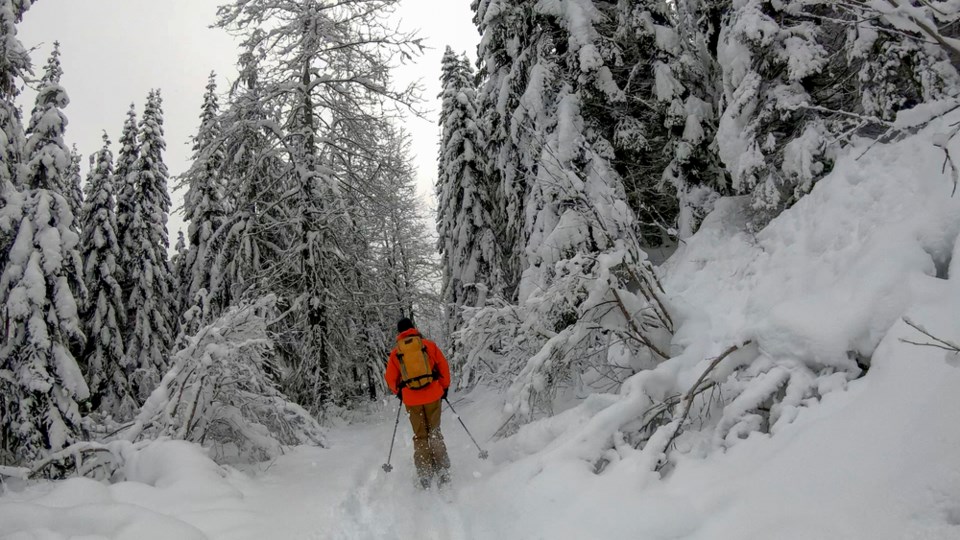If you are planning a trip to the mountains, this is no time to be cutting corners.
As the latest weather system continues to hammer the coast, Avalanche Canada is warning backcountry users to heed caution. National avalanche forecasters have listed Saturday's danger ratings in the South Coast region, including Metro Vancouver, as "high" for alpine and treeline terrain, and "considerable" below the treeline.
Recreationists should "Avoid avalanche terrain at upper elevations where it has not been raining as storm slabs are likely widespread," warns Avalanche Canada, and remain cautions of the potential for "wet, loose avalanches" at lower elevations where it has been raining.
"The storm continues and avalanche activity is expected to remain widespread," reads Avalanche Canada's forecast.
Forecasters credit "a complex snowpack" with several avalanche incidents that have taken place across the region in the last week, including a fatal avalanche near Pemberton that happened on Monday, Dec. 28.
SINKHOLES
Avalanches aren’t the only alpine hazard backcountry enthusiasts need to be on the lookout for this time of year. In another incident near Squamish earlier this week, a snowboarder fell into a sinkhole up to her neck.
Luckily, the woman’s head remained above the snow and a nearby party with avalanche rescue equipment was able to find and dig her out uninjured.
Sinkholes are created when water carves out a pocket of air underneath the snow. Apply pressure to the hollowed-out snowpack and there’s a chance you’ll fall through.
TREE WELLS
Another seasonal backcountry hazard is the tree well.
“Severe weather, avalanches and tree wells are three of its primary hazards,” wrote BC AdventureSmart executive director Sandra Riches in a statement Saturday.
What is a tree well? Like a sinkhole, a tree well is void or area of loose snow that can be hard to spot from the surface. They form around the base of a tree as its branches shelter the trunk from snowfall.
“Low-hanging branches such as on fir trees contribute to the forming of a tree well, as they efficiently shelter the area surrounding the trunk. They can also occur near rocks and along streams,” noted Riches.
Tree wells can swallow even the most experienced recreationalists, from hikers and snowshoers to skiers, sledders and snowboarders.
Riches said tree wells are most often associated with backcountry or ungroomed trails, and that the risk of encountering one is greatest during and immediately following a heavy snowstorm.
How can I protect myself from tree wells?
Riches recommends steering clear of areas near tree trunks and low hanging branches.
Always ski or board with someone else. That way, if you do fall into a tree well, they can help dig you out.
How do I get myself out of a tree well?
Stay calm and don’t panic, recommends Riches.
Keep breathing.
Turn around slowly so you are facing upwards.
Grab hold of the tree trunk or branches and begin pulling yourself up.
TRAINING YOU NEED
Despite its beauty, Riches said the risks of the backcountry necessitate self-sufficiency and developing the proper backcountry awareness, skills and training to make good decisions.
Find more information and get the training you need at www.adventuresmart.ca/winter/avalanche.htm
With files from Steven Chua and Megan Lalonde

